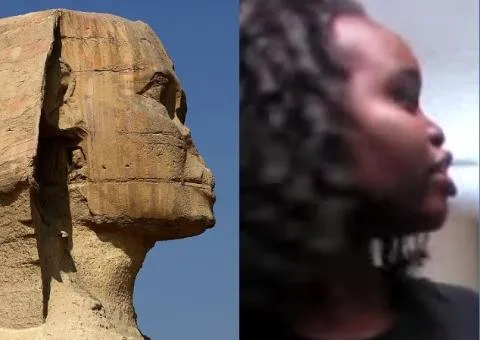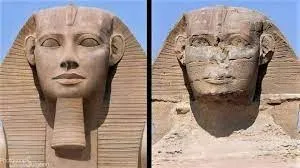Sphinx May Really Be a Black African, New York Times, 1992:
This is a digitized version of an article from The Times’s print archive, before the start of online publication in 1996. To preserve these articles as they originally appeared, The Times does not alter, edit or update them.Occasionally the digitization process introduces transcription errors or other problems; we are continuing to work to improve these archived versions.
To the Editor:
In “The Case of the Missing Pharaoh,” (Op-Ed June 27), John Anthony West shows that the Sphinx does not resemble the Old Kingdom pharaoh Chephren, the traditional attribution.
The analytical techniques he and Detective Frank Domingo used on facial photographs are not unlike methods orthodontists and surgeons use to study facial disfigurements. From the right lateral tracing of the statue’s worn profile a pattern of bimaxillary prognathism is clearly detectable. This is an anatomical condition of forward development in both jaws, more frequently found in people of African ancestry than in those from Asian or Indo-European stock. The carving of Chephren in the Cairo Museum has the facial proportions expected of a proto-European.

Thus, the Sphinx is likely a facial representation of a black African. Considering that the peopling of ancient Egypt derived from an ancestral mixture of Africans and Mediterraneans, facial soft-tissue analysis of this fabled man-lion would support a much earlier origin for the Sphinx, when Africans may have dominated the region. SHELDON PECK Newton, Mass., July 3, 1992 The writer is an orthodontist.







